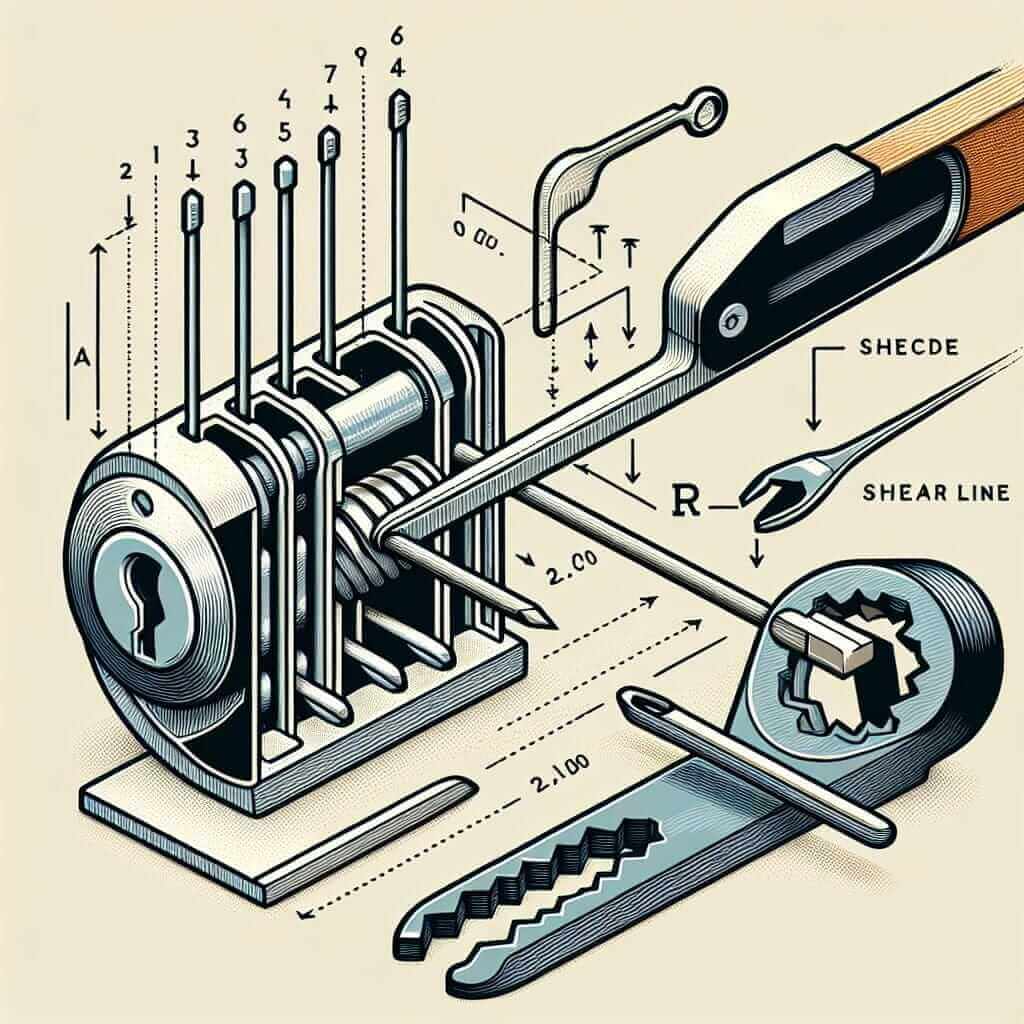As an IELTS instructor with over 20 years of experience, I often encounter students who struggle with the Reading section, particularly when unfamiliar topics arise. One such topic that frequently appears is lock picking. While seemingly daunting, understanding the mechanics of lock picking can significantly enhance your comprehension and performance on the IELTS Reading test. This guide will equip you with the knowledge and strategies to confidently tackle such passages.
Why Lock Picking Appears in IELTS Reading
The IELTS Reading test evaluates your ability to understand complex texts on a variety of subjects. Lock picking, often featured in passages about security systems, history, or even detective fiction, tests your ability to:
- Grasp technical vocabulary: Passages on lock picking introduce terms like “cylinder,” “shear line,” and “tension wrench,” challenging your vocabulary comprehension.
- Follow a process: Understanding how lock picking works involves comprehending a sequence of actions. The IELTS Reading test often assesses your ability to follow instructions or describe a process.
- Identify key information: You need to differentiate between essential details about lock picking techniques and less critical information.
Deconstructing Lock Picking for IELTS Reading
To effectively understand a passage about lock picking, familiarize yourself with the fundamental concepts:
Basic Components of a Lock
- Cylinder: The central part of the lock where you insert the key.
- Pins: Spring-loaded pins within the cylinder that must be aligned to the key’s grooves.
- Shear line: The imaginary line that the pins must align on for the lock to open.
The Process of Lock Picking
- Applying tension: A tension wrench applies slight rotational force to the cylinder.
- Lifting pins: A pick is used to individually lift each pin until it reaches the shear line.
- Overcoming the binding point: Each pin has a point where it binds against the cylinder. The pick is used to feel for and overcome this point, allowing the pin to be set at the shear line.
- Repeating the process: Steps 2 and 3 are repeated for each pin in the lock until all are aligned at the shear line.
- Turning the cylinder: Once all pins are aligned, the tension wrench is used to rotate the cylinder and open the lock.

Example in IELTS Reading
Consider this excerpt from a potential IELTS Reading passage:
“…The tension wrench maintained a constant pressure on the cylinder. With a deft touch, the locksmith manipulated the pick, feeling for the binding point of each pin. As each pin clicked into place at the shear line, the cylinder rotated slightly…”
In this passage, you can identify key terms like “tension wrench,” “pick,” “binding point,” and “shear line.” Understanding these terms and their roles in the lock picking process is essential for answering comprehension questions.
Tips for Success
- Expand your vocabulary: Familiarize yourself with common lock picking terms.
- Practice active reading: Underline keywords and phrases related to the process and components of lock picking.
- Focus on the sequence: Pay attention to the order of actions and the relationship between different steps.
- Don’t panic if the topic is unfamiliar: Use context clues and your understanding of the basic principles to infer meaning.
Conclusion
While encountering unfamiliar topics like lock picking in the IELTS Reading test can be intimidating, remember that the test primarily assesses your reading comprehension skills. By approaching the passage strategically, focusing on key terms and processes, and utilizing your existing knowledge, you can successfully navigate even the most challenging texts and achieve your desired IELTS score.